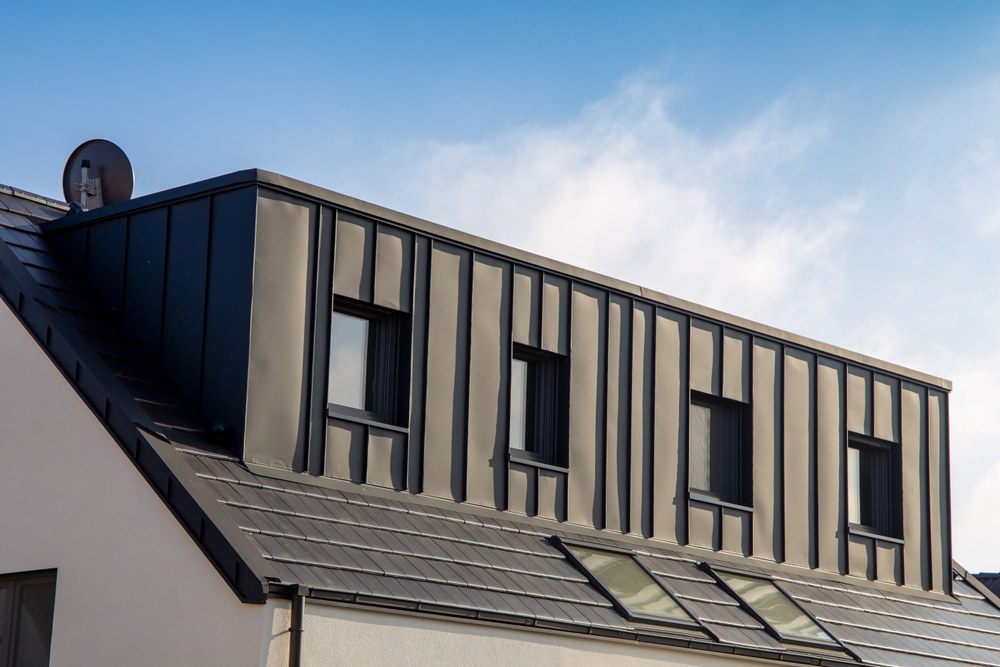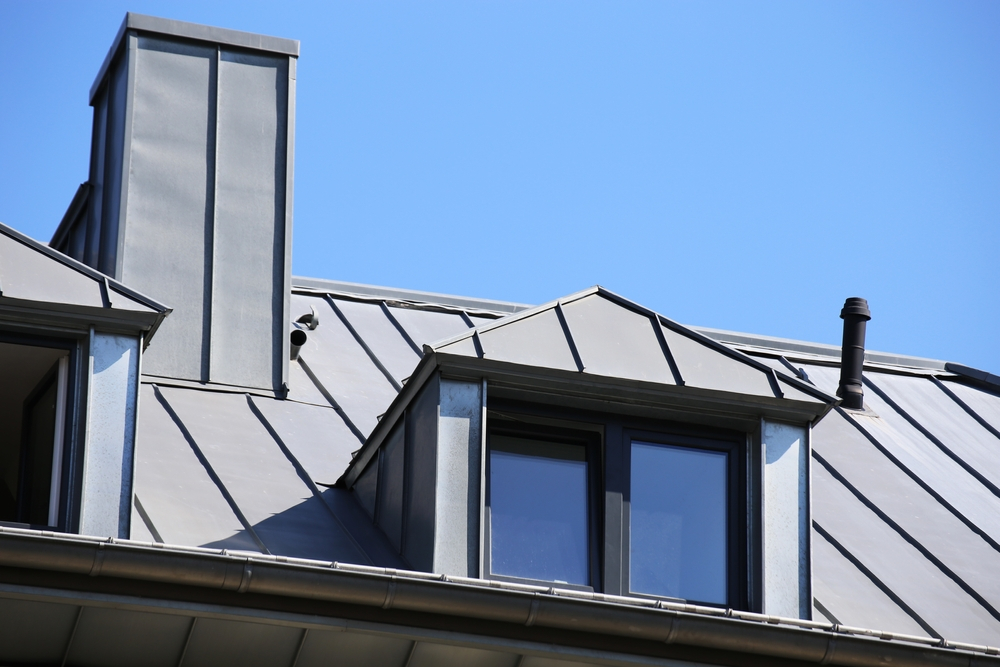Have you ever wondered how a building’s exterior can positively impact our environment? Or perhaps you’re curious about the difference between conventional cladding materials and newer eco-friendly options? Today, we’re diving into the world of zinc cladding and uncovering why it’s creating such a buzz in sustainable architecture. If you’re looking for a modern, durable, and energy-efficient way to design or upgrade your building, zinc could well be the ideal choice.
In this post, you’ll learn about zinc’s environmental advantages, its exceptional longevity, and how it compares to other popular materials like steel, aluminium, or even timber. We’ll also address key questions that often pop up, such as whether zinc cladding rusts over time and whether it’s suitable for coastal areas. By the end, you’ll have a thorough grasp of zinc cladding’s unique benefits and the best ways to incorporate it into your next sustainable build.
From understanding recyclability to exploring long-term cost savings, this guide covers everything you need to know. Let’s get stuck into the details and discover how zinc cladding can help you achieve those eco-friendly goals without sacrificing style or practicality.
Introduction to Zinc Cladding
Overview of Modern Metal Cladding Trends in Australia
Metal cladding has become increasingly popular in Australian construction, particularly for modern designs that require a sleek, minimalist look. Architects and builders across the country are turning to metals like aluminium, steel, and zinc because they’re lightweight, durable, and versatile. These cladding options can withstand Australia’s harsh weather, from scorching heat in the outback to salt-laden coastal breezes.
But what really stands out lately is how metal cladding aligns with sustainability objectives. Many designers favour metals that can be recycled and reused without losing any of their original quality. Among all the choices, zinc is quickly gaining attention thanks to its eco-friendly profile, eye-catching finish, and impressive lifespan.
What Is Zinc Cladding?
Zinc cladding is essentially a protective metal covering made from rolled zinc sheets. These sheets are installed on building exteriors to offer protection from weather and corrosion while imparting a distinctive appearance. Zinc naturally develops a protective layer called patina, which can change the metal’s colour over time. This patina not only creates a striking aesthetic but also helps the zinc shield itself from damage or decay.
Why Choose Zinc for Sustainable Building Projects?
In the realm of sustainable building, zinc’s ability to last for decades—often surpassing 50 years—makes it a solid pick. Its patina self-heals from minor scratches and scrapes, which means you don’t have to worry about ongoing maintenance. Plus, zinc is fully recyclable, so it reduces waste and contributes to a circular economy. If your goal is to craft a structure that’s both stylish and future-proof, zinc stands out as a top contender.
Understanding the Environmental Impact
How Eco-Friendly Is Zinc Cladding?
Zinc is regarded as one of the more eco-friendly metals for construction. It has a lower melting point compared to many other metals, so producing zinc components consumes less energy overall. The patina that forms naturally on zinc surfaces eliminates the need for habitual repainting or chemical coatings. Moreover, as zinc weathers, it does not release significant toxins, making it healthier for the environment.
Recyclability and Lifecycle Benefits
Another big plus is zinc’s high recyclability rate. At the end of a building’s life, zinc cladding can be gathered, melted down, and reused without losing its inherent qualities. This cyclical approach reduces the demand for new raw materials, cutting down on carbon emissions associated with extraction and production. By choosing zinc, you’re effectively investing in a material that can be part of a continuous reuse loop.
Reducing Carbon Footprint Through Zinc
Construction projects often contribute heavily to carbon emissions, but zinc offers a way to lower that impact. Because the energy required to produce zinc cladding is generally lower than for other metals, it helps reduce a project’s overall carbon footprint. Pair that with the long lifespan and minimal maintenance needs, and you have a winning formula for sustainable design. With zinc, you’re not just constructing a building; you’re making a lasting, responsible contribution to Australia’s green future.

Top 7 Benefits of Using Zinc Cladding
Exceptional Durability
Zinc stands the test of time like few other cladding materials. It can endure extreme temperatures and adverse conditions without warping or cracking. In fact, zinc often performs even better in harsh climates, thanks to the protective patina it develops. This surface layer forms a barrier against moisture and corrosion, ensuring the metal beneath remains stable for many decades.
Low Maintenance Requirements
If you’re hoping to keep ongoing expenses manageable, zinc’s low maintenance profile is a genuine boon. The patina neutralises minor blemishes by self-healing, which means you won’t be running around repainting or replacing panels every few years. Your main tasks usually involve routine inspections and occasional cleaning to remove dirt or debris. So, if you like the idea of saving both time and money, zinc has you covered.
Energy Efficiency and Insulation
Zinc cladding can help insulate a building when combined with appropriate substrates and insulation layers. This added insulation can keep buildings cooler in summer and warmer in winter, translating into reduced energy bills and a smaller carbon footprint. Given Australia’s diverse climate, having a cladding material that boosts climate control is a smart move for comfort and cost-effectiveness.
Adaptability in Design and Aesthetic Appeal
One of the standout reasons architects love zinc is its design flexibility. It can be shaped, curved, folded, or perforated to achieve unique looks. The patina itself evolves over time, providing shades ranging from metallic grey to soft blue or even green, depending on atmospheric conditions. If you’re after a building that is both functional and visually captivating, zinc is sure to tick those boxes.
Corrosion Resistance in Australian Climates
High humidity and coastal environments can be tough on building materials. However, zinc’s natural patina formation provides excellent defence against corrosion. In fact, it often lasts longer than common cladding metals under salty or humid conditions. This corrosion resistance is crucial in regions like coastal Queensland or Western Australia, where salty sea air can wreak havoc on lesser materials.
Long-Term Cost Savings
While the initial cost of zinc cladding can sometimes be higher than alternatives, its longevity and minimal upkeep usually balance the scale. When you add up maintenance, repair, and replacement costs over the years, zinc often emerges as more cost-effective. Because it lasts for decades with minimal interventions, you end up saving a substantial amount in the long run.
Strong Sustainability Credentials
Sustainability is a massive priority in construction nowadays, and zinc easily meets those standards. It’s fully recyclable, requires less energy to produce than some other metals, and builds a protective patina that helps extend its life. From an environmental point of view, installing zinc cladding is a brilliant way to future-proof any building project, while also enhancing its aesthetic appeal.
Conclusion
The bottom line is that zinc cladding offers a harmony of style, durability, and environmental responsibility. For those seeking an eco-friendly exterior that won’t require constant upkeep, zinc really shines. Its natural patina layer, long life expectancy, and minimal maintenance demands show how easily beauty and sustainability can go hand in hand.
Ultimately, investing in zinc cladding is an investment in the future. By choosing a material that champions both style and sustainability, you pave the way for innovative designs that last. If you’re keen to build with a low footprint while enhancing the aesthetic integrity of your project, zinc cladding is well worth consideration.





